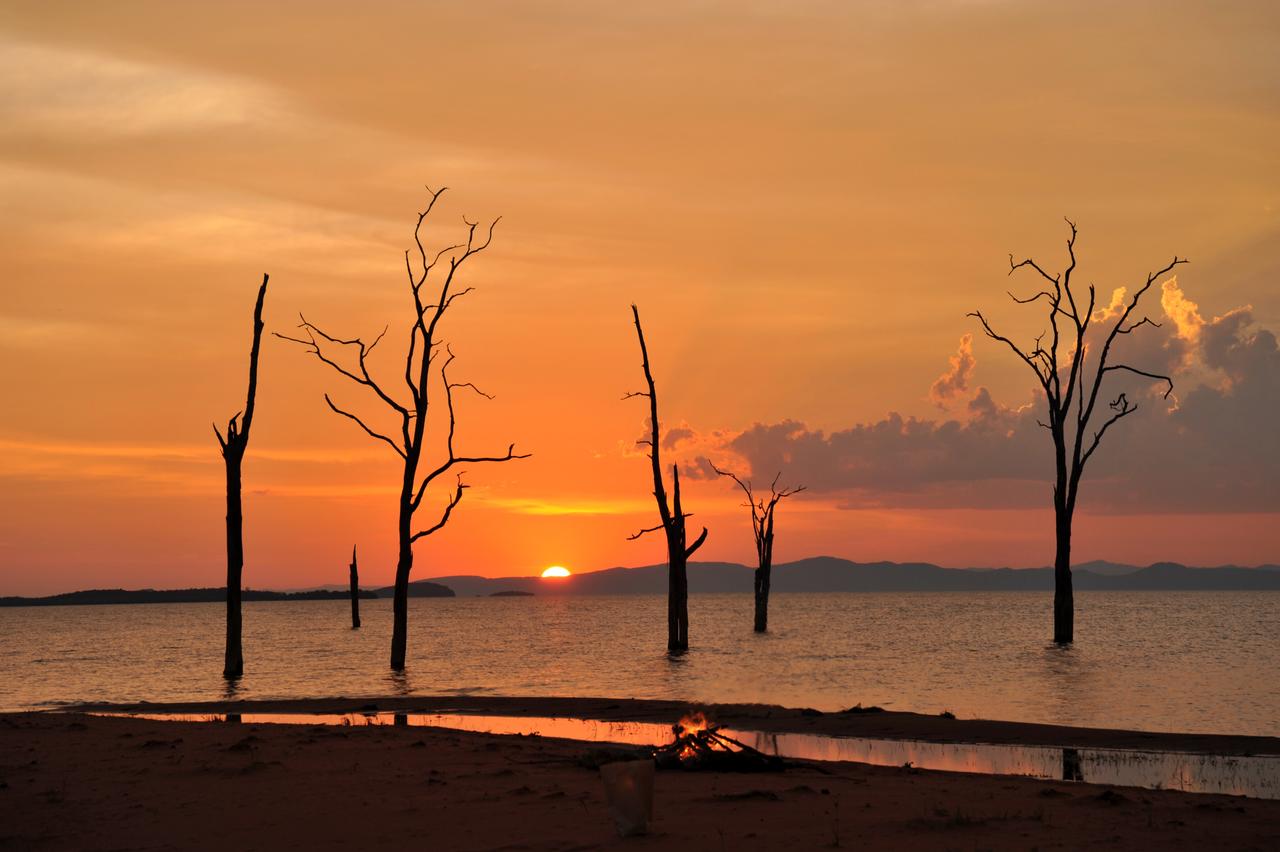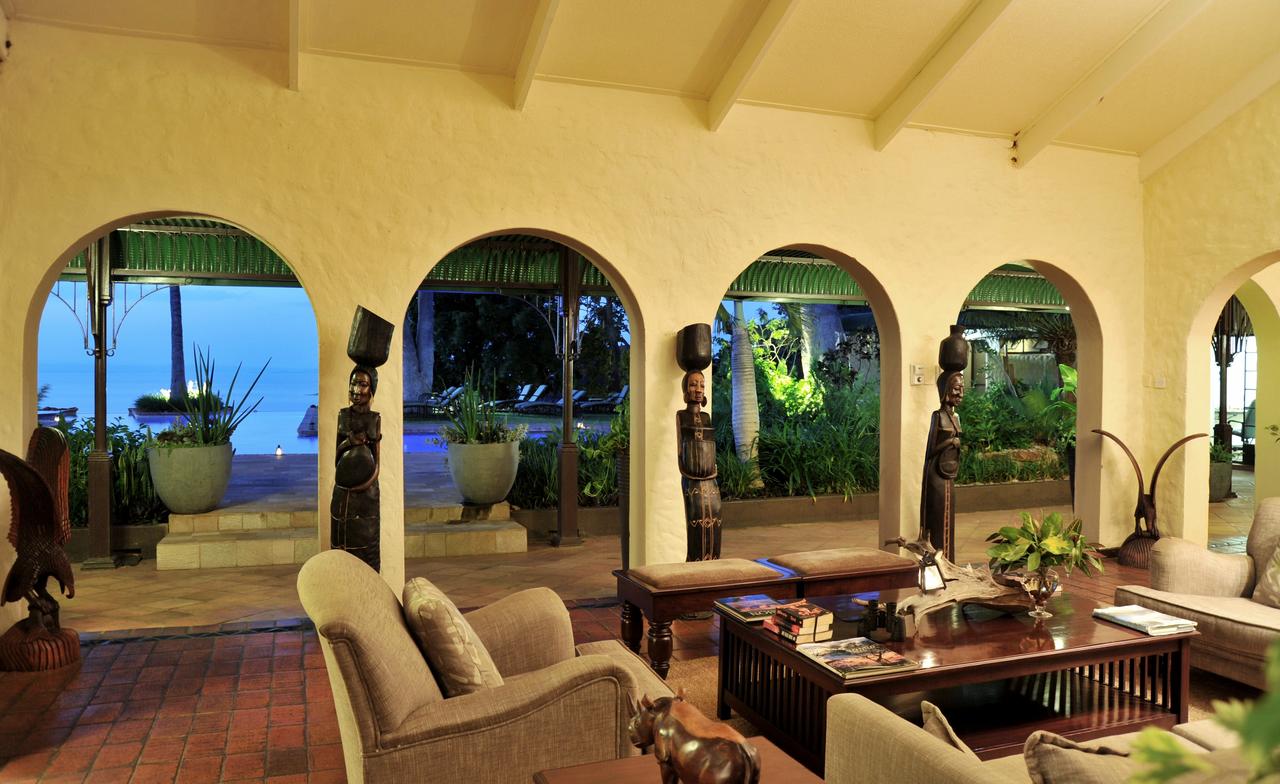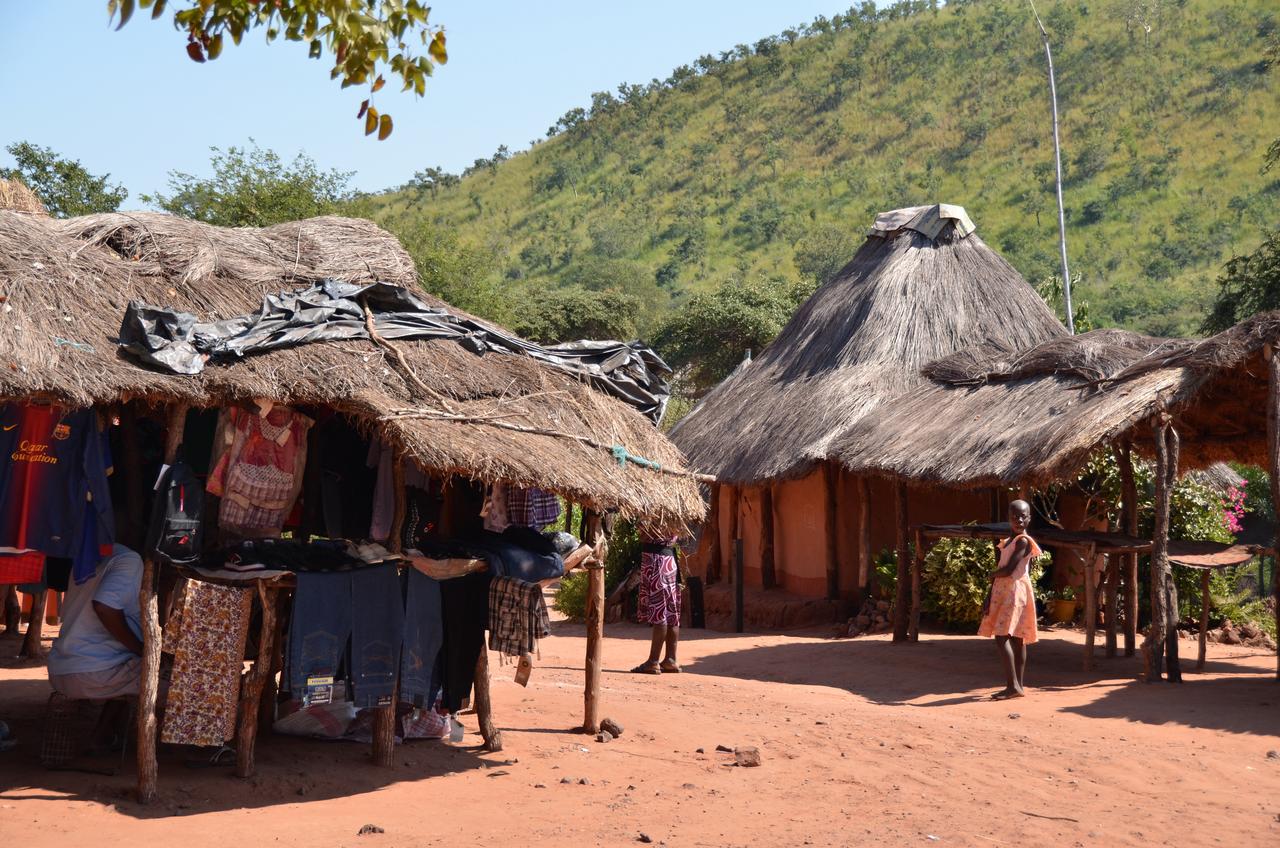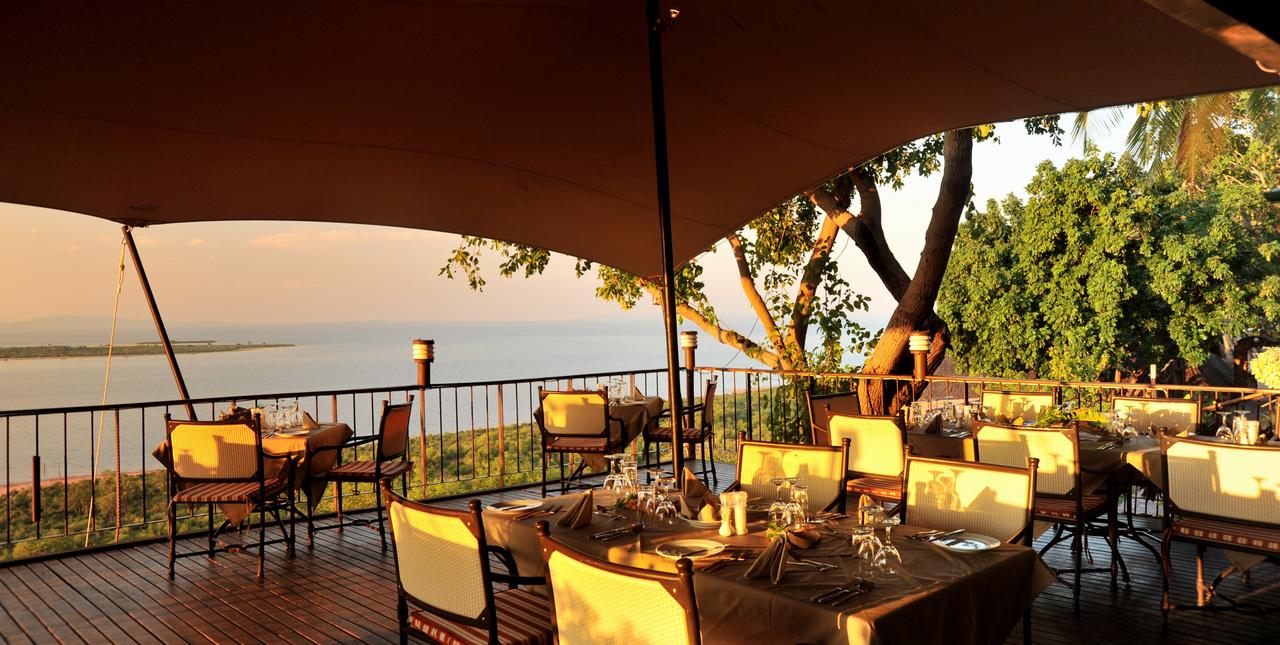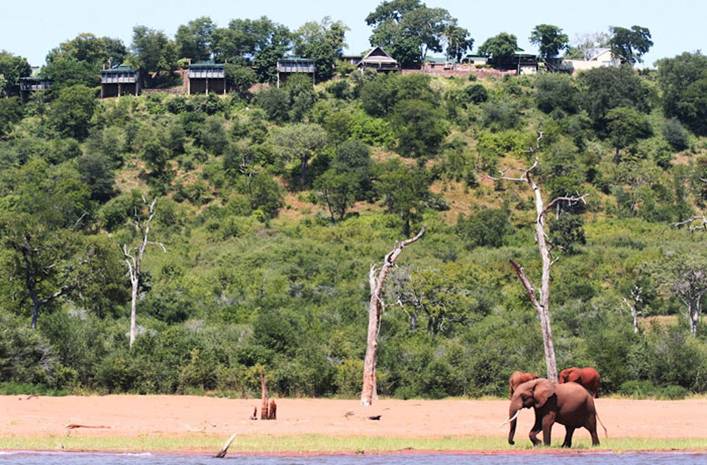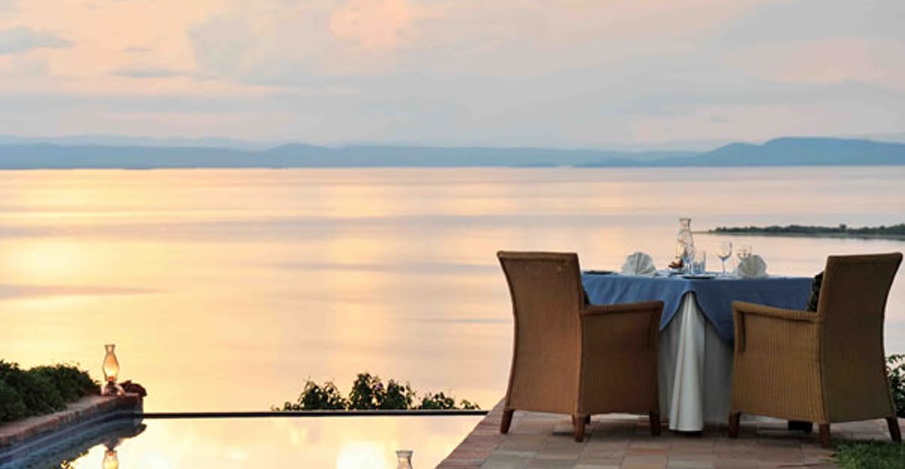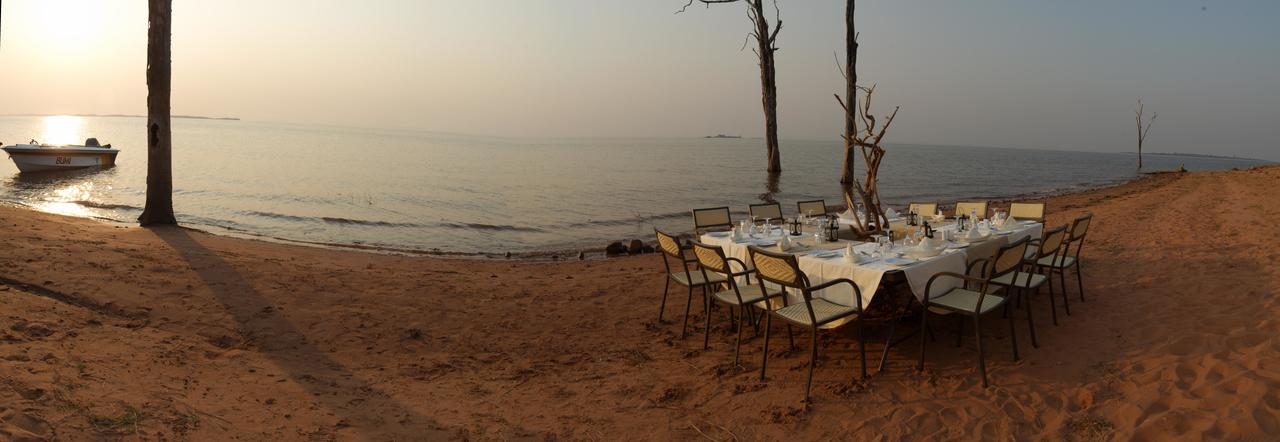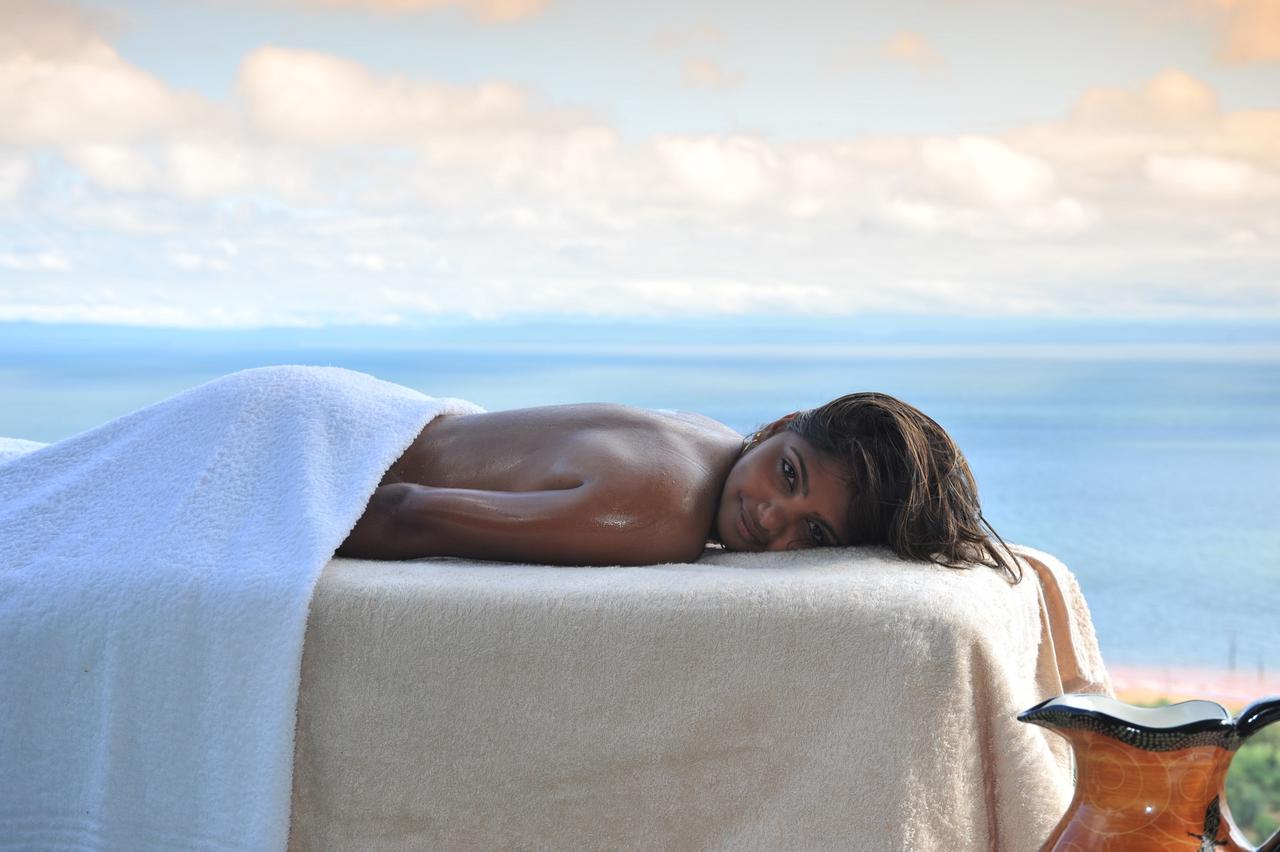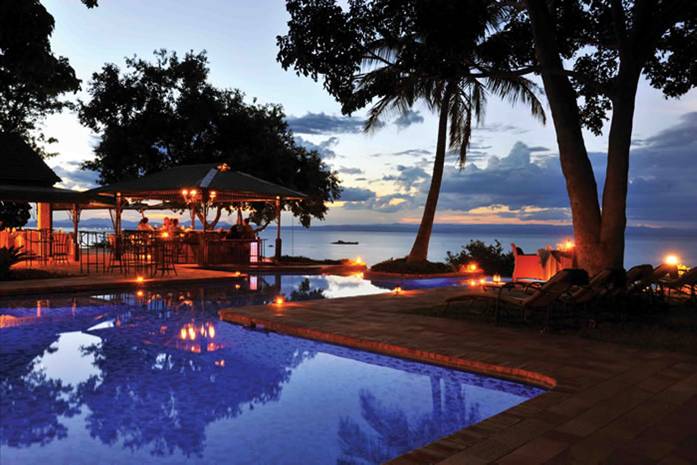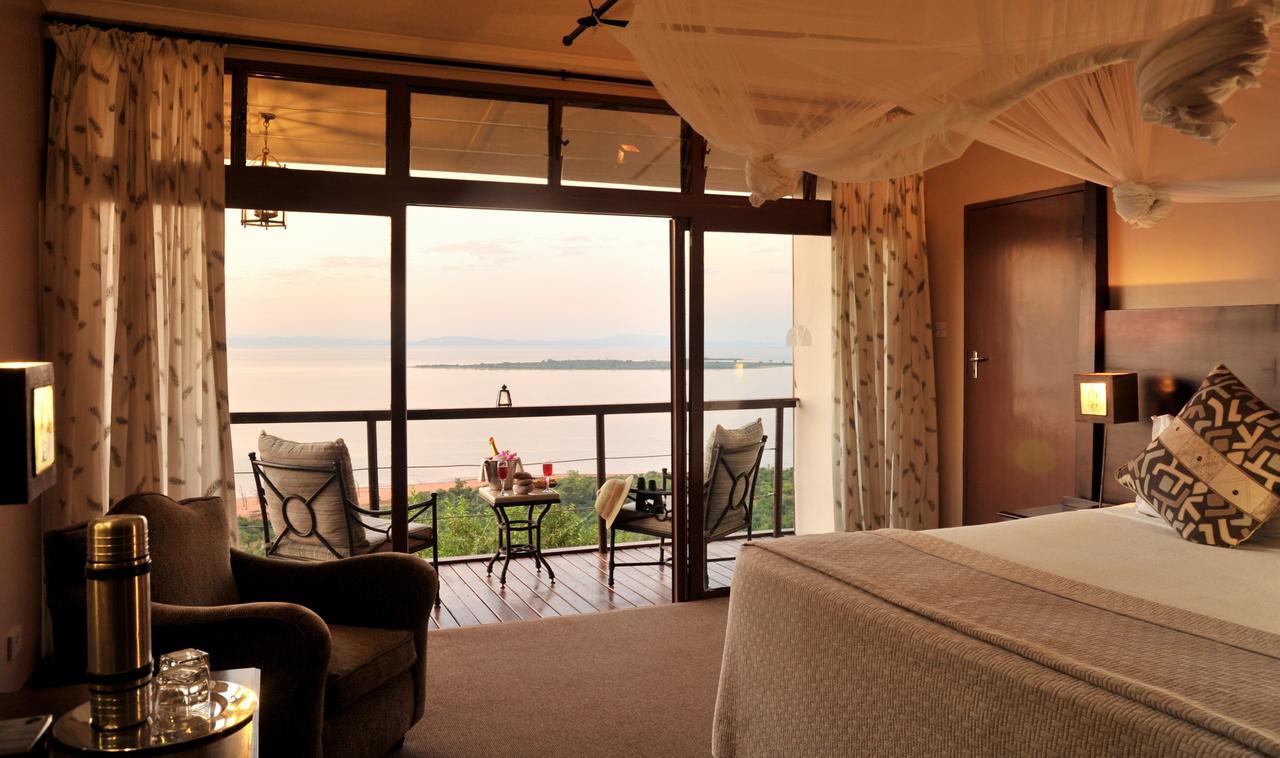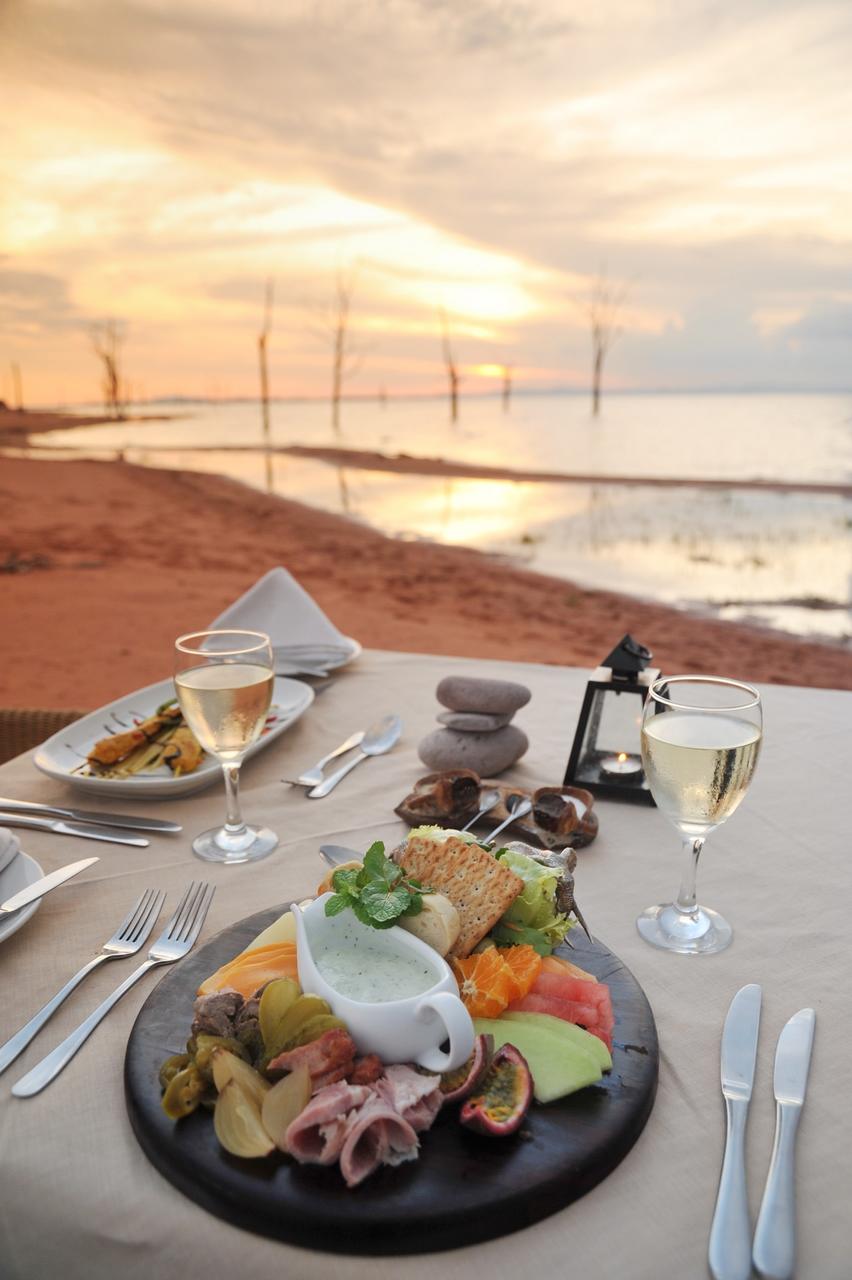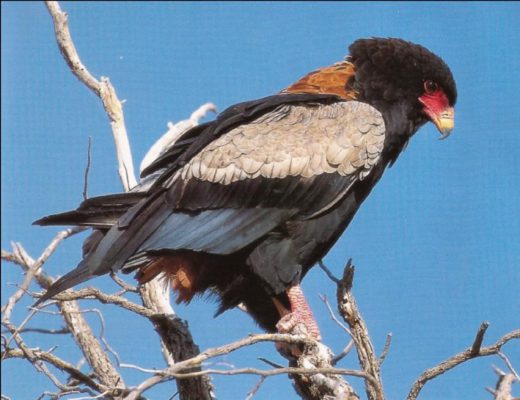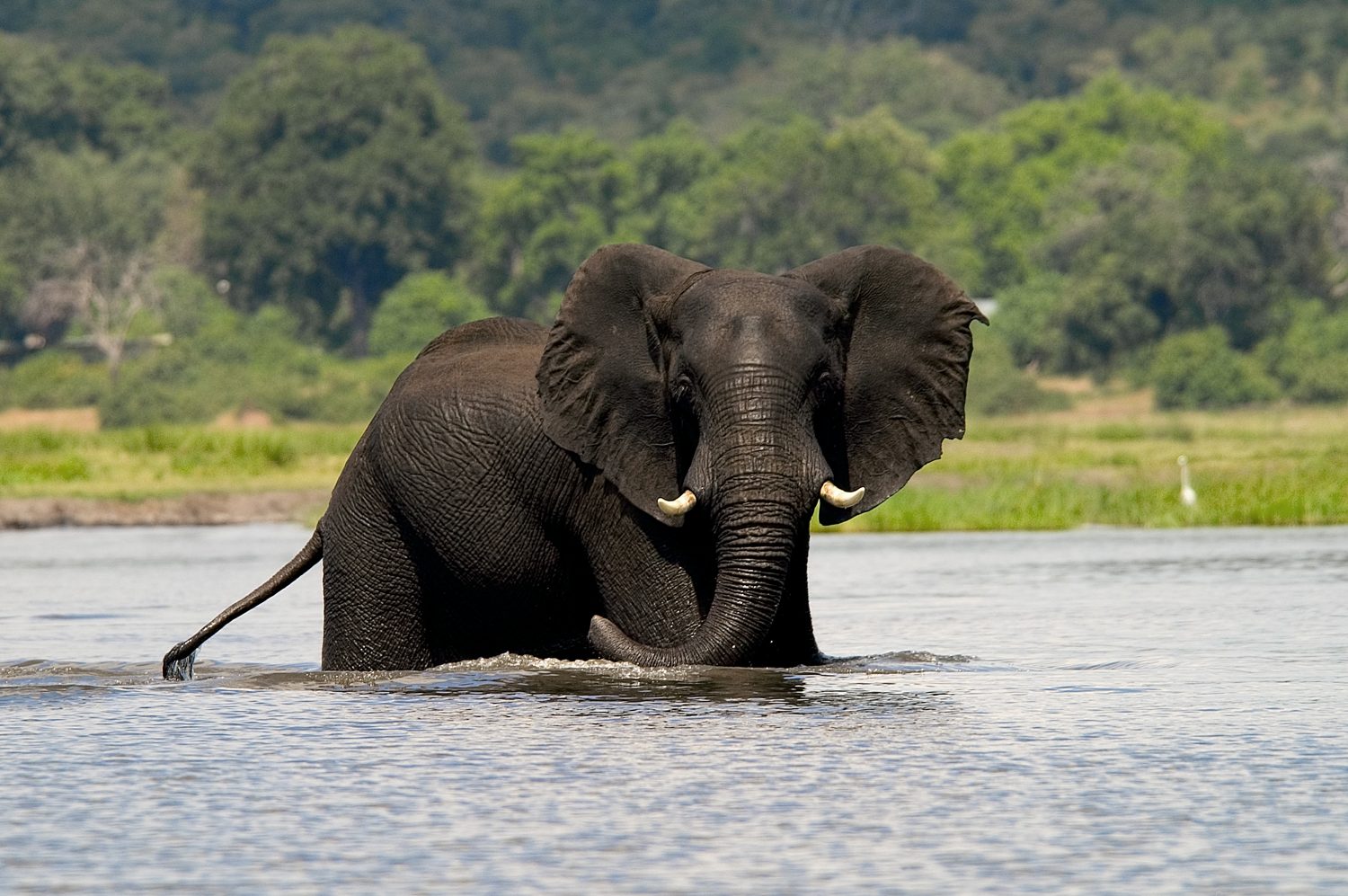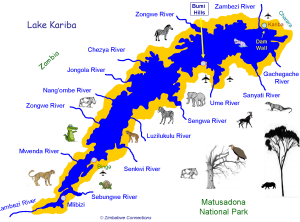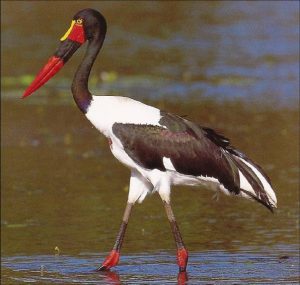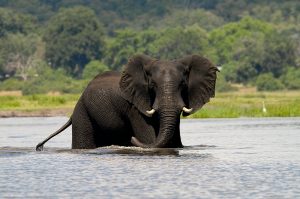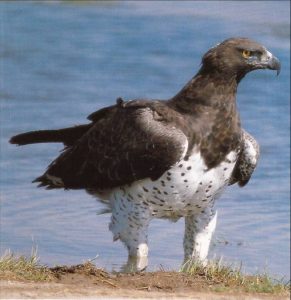Bumi Hills Safari Lodge
Situated on the banks of Lake Kariba
Bumi Hills Safari Lodge is situated in an elevated position in the Bumi Hills from which the lodge takes its name. Overlooking Lake Kariba it enjoys a prime position in one of Africa’s finest wilderness locations on the North Eastern border of the Matusdona National Park.
The views from Bumi Hills Lodge are breathtaking and from the terraces and the beautifully appointed rooms guests overlook the shoreline and lake as well as a waterhole which hosts a passing parade of animals at different times of the day.
The area is noted for its wildlife and in the evenings sundowners are enjoyed by the lake often in the company of feeding wildlife.
Access to Bumi Hills is by air or boat from Kariba town or by road (poor quality) from Karoi village via Siyakobvu.
The safari lodge has a total of 10 rooms, all with views over Lake Kariba. All rooms are premium rooms with balconies and uninhibited views over Lake Kariba. There are garden rooms available as well with slated terraces and these are set a little way back behind on a level above the premium rooms.
Taking centre stage is the beautiful infinity pool that seems to blend endlessly into the lake horizon. The pool is surrounded by intimate wine and dining terraces on different levels. The lodge interiors have been beautifully finished in a fusion of contemporary western and African styles.
Bumi Hills Safari Lodge is situated on an extensive wildlife conservation area and is home to lion, leopard, big herds of elephant and buffalo, as well as a multitude of different plains game.
Guests can indulge in superb fishing in the lake waters surrounding the safari lodge with bream and the fighting tiger fish in abundance. Birding is popular in the area and guests will likely have sightings of the wonderful Fish eagle and hear its high pitched call echoing through the hills. Visits with the local Tonga people and engaging in cultural experiences with the people is also well worth doing.
There are a varied range of exciting and relaxing activities to choose from including both morning and afternoon game drives, fishing for the famed fighting Tiger fish and stunning game walks with an experienced and knowledgeable guide.
Lapped by the waters of Lake Kariba, Bumi Hills Safari Lodge enjoys wonderful isolation. It is an oasis of tranquility and an ideal retreat from the hustle and bustle of modern life.
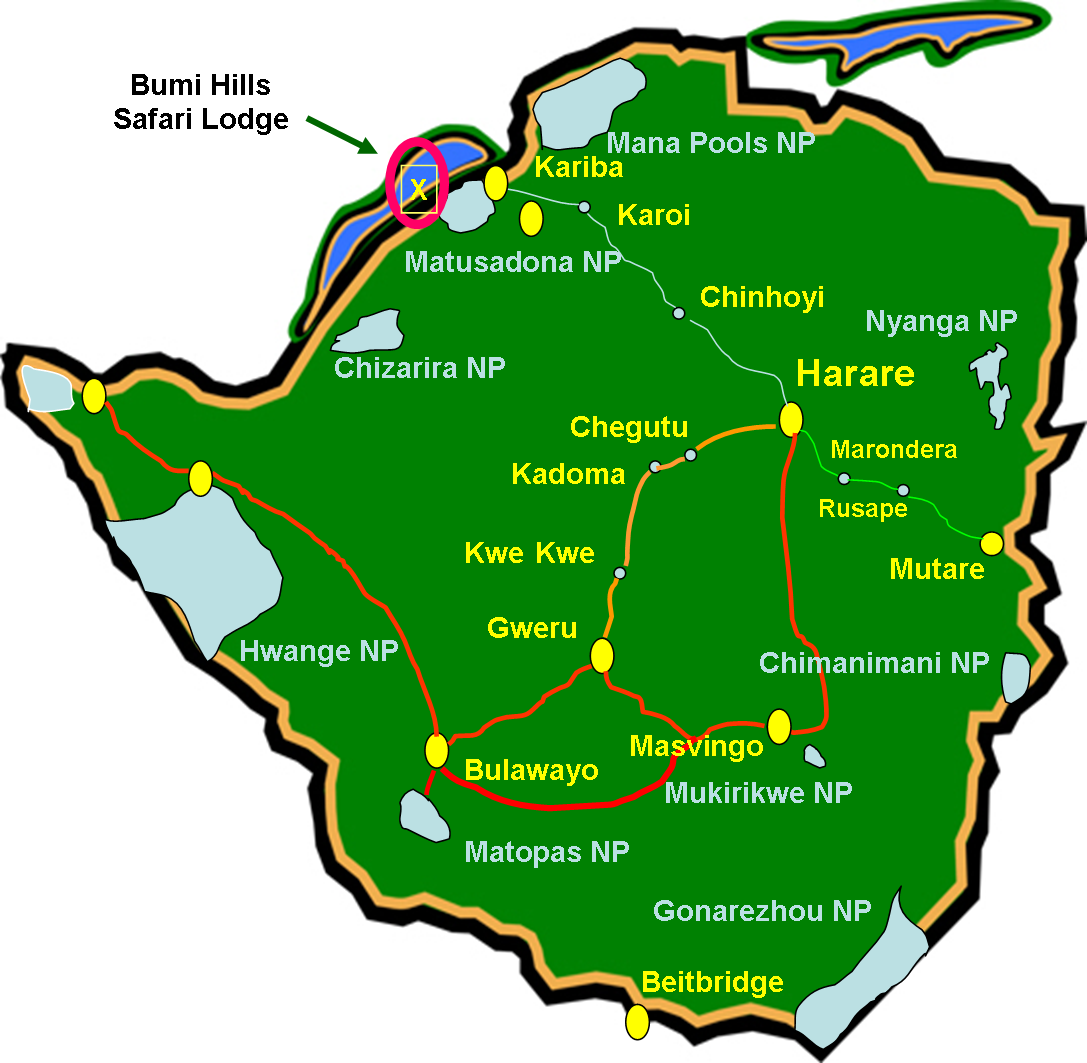
At A Glance

Accommodation
Bumi Hills Safari Lodge has a total of 10 rooms, all with views overlooking Lake Kariba. All rooms are premium rooms with balconies and uninhibited views over the lake. There are garden rooms available as well with slated terraces and these are set a little way back behind on a level above the premium rooms.
Fully inclusive rates include:
- Accommodation twin share, triple or single
- Full board including all drinks
- Each tent has been individually and tastefully decorated with an East African influence and come with:
- An open netted front with views from both the bed and bathroom
- Private deck with a seating area and a hammock under the trees
- Bathroom vanity with double basins, separate toilet and shower and luxury guest amenities
- Outdoor bathtub and shower, with candles and decorative tiles
- Dressing table, with locally made mirrors and ample cupboard space
- Universal plug points
- Chilled water in a flask with glasses
- Lockable safety deposit bag for all your valuables
- Hairdryers on request at check in
Room facilities:
- Air Conditioning
- Mini Bar
- Tea / Coffee
- Fan
- Shower
- En-suite bathroom
- Verandah / Balcony
- Dressing gowns
- Fridge
- Pure Cotton Linen
- Safe
Available services
- Credit card facility
- Laundry Service

Air and Road Access
Bumi Hills can be accessed by air, road and boat transfer or self-drive.
Air:
Bumi Hills Safari Camp can also be accessed by light aircraft and the Bumi Hills airstrip (FVBM) is located a short 5 minute drive from the lodge. There are several chartered flight options from Harare, Hwange, Mana Pools and Victoria Falls. W recommend Safari Logistics, Alt Air and Wilderness Air. Safari Logistics, which operates road and air transfers in Zimbabwe on a daily seat rate flights (guests don’t have to pay for a private charter, just their seat). Safari Logistics flies between Victoria Falls, Hwange, Kariba, Mana Pools and Harare.
Flying in over Lake Kariba is something truly incredible, leaving you with a clear idea of just how vast the lake is and conjuring up magical stories of what lies underneath the depth of blue waters. You will enjoy views of the rugged Matusadona mountain terrain, outcroppings of islands, a sea of white trees jutting out of the glass like water and herds of elephants grazing on the new shoots of green grass on the shorelines.
Boat transfers are carried out in covered speed boats and normally take 90 minutes each way
Air Zimbabwe flies into Kariba airport three days a week. Guests need to chaeck with their travel agent as these flights can be erratic.
Road:
If you are travelling from Harare by road it will take you approximately 4 hours (370 km) to get to Kariba, where you will meet the boat transfer at the Marineland Harbour and complete your journey with a 90 minute boat trip across the lake. This will need to be booked in advance.
Self-Drive directly into Bumi Hills Safari Camp is another option but only if you have a 4WD.
For visitors who are self-driving through Zimbabwe, whether you come from Victoria Falls or Harare, there is a journey that takes you across the length of Lake Kariba – 1250km.
A 24-hour ferry operates where you can sit back, relax and take in the views with your vehicle travelling safely with you. The Kariba Ferry runs on set departures and this must be planned and booked in advance.

Activities
There are several activities at Bumi Hills Safari Camp, providing guests with a choice of how they wish to spend their day. These include early morning Game Walks, Game Drives, Fishing for the famed fighting Tiger fish, Birding, Photographing wildlife, Boat Cruise, Village Cultural Tour, Anti-Poaching Patrol, Kariba Town Visit, visit to the Kariba Dam wall
- Fishing: Bumi is the prime fishing region of Kariba and is a major attraction that sets Bumi apart from any traditional luxury safari lodge. Tiger fishing is a real challenge and pound for pound is one of the worlds most powerful freshwater species.
- Sailing: Bumi Hills has recently introduced sailing to its list of exciting activities. The lake waters around Bumi Hills are ideal to explore from the lodge’s spacious 30 foot catamaran. Bumi have a qualified skipper on hand to take guests on a special cruise through beautiful archipelagos, bays, creeks and inlets to discover sandy beaches, birding havens and game rich ecosystems. As a special treat the Bumi activities team can arrange a packed picnic lunch for a stop off on an island for a unique private dining experience.
- Game drives: Bumi is unique among luxury safari lodges because of the exquisite added dimension of the water – Kariba is among the worlds largest man-made lakes and a genuine African wilderness with far more animals than people. This allows for glorious game viewing by boat as well as the traditional open 4 x 4 vehicles and walking in the wilds with an armed professional guide.
- Cultural Excursions: The Bumi Hills Wildlife Area is bordered in the north west by the Chalala and Mola communities, which are home to the Tonga, a delightful and very spiritual people who have resided in this area and along the length of the Zambezi river for centuries. They have preserved ancient traditions and still live a largely subsistence lifestyle that is reliant on fishing, livestock and small scale farming. In the village of Chalala these customs have melted together with the inevitable infiltration of modern ways of life.
- Birding: The Bumi area offers truly incredible birdlife, especially water birds, and hundreds of species have been recorded. It is a thrilling location for photography of the majestic scenery and wildlife, but also the prolific bird life for enthusiasts. See ‘Wildlife‘ below
- Lodge Relaxing: For those that want to take some time out to relax, you do not have to venture too far from camp to see wildlife as there are regular visitors including elephants, bush babies, monkeys, squirrels and on the rare occasion, a resident leopard.
- Kariba Dam wall: A visit to the Kariba Dam wall is highly recommended. The dam wall also serves as the Customs point with Zambia which is easily accessible. You will require a visa which can be purchased at Customs.

Wildlife
A good variety of animal and bird species can be seen near the lodge, on the lake shore or within Matusadona National Park.
Animals:
Animals include: elephant, buffalo, night ape, honey badger, civet, small spotted genet, slender mongoose, banded mongoose, spotted hyena, wild cat, lion, leopard, yellow spotted dassie, black rhinoceros, zebra, warthog, common duiker, grysbok, klipspringer, waterbuck, bushbuck, scrub hare, porcupine, vervet monkey, chacma baboon, side-striped jackal, hippopotamus, roan antelope, kudu and bush squirrel.
Some of the more elusive species include: clawless otter, white-tailed mongoose, reedbuck, sable antelope, eland, civet, rusty spotted genet, caracal and bush pig.
Also present but only sighted are: wild dog, cheetah, roan and pangolin
Birds:
Over 240 species of birds have been recorded in the park:
These include: grey herons, goliath herons, great white herons, saddlebill storks, plovers, waders, geese, osprey, woolly-necked storks, open-billed storks, white-winged plovers, Kittlitz’s Plover and Caspian Plover is often seen in the summer months. Red-winged pratincoles, Curlew Sandpiper, Common Sandpiper, Marsh Sandpiper, Wood Sandpiper, Ruff, Common Greenshank and Little Stint are all common.
There are several large colonies of darters and reed cormorants within the tree lines, as well as white-breasted cormorants.
Bee-eater colonies are often found in the sandstone banks and cliffs of the minor rivers that traverse the valley floor.
Most local raptors are present in good numbers and include the Fish Eagle, African Hawk-Eagle, Ayres’s Hawk-Eagle and African Crowned Eagle.

Lake Kariba
Lake Kariba was formed by the construction of the Kariba Dam which was started in 1955 and completed in late 1958.
The dam was designed by the French engineer and designer Andre Coyne who designed over fifty five dams and was a specialist in ‘arch dams’, Kariba being one of them.
The dam was constructed between 1955 and 1959 by Impresit of Italy at a cost of $135,000,000 for the first stage which was the Kariba South power cavern.
Final construction and the addition of the Kariba North Power cavern was built by Mitchell Construction and was completed in 1977 for a total cost of $480,000,000. During construction, 86 men lost their lives.
Over a million cubic metres of concrete was poured into the 128 metre high wall which has a thickness of over twenty four metres, this construction being necessary to withstand the pressure of nearly ten million litres of water which pass through the spillway every second.
At then end of 1958 the sluice gates were closed and in 1963 the maximum level was reached. At the time of its completion it was the largest man made dam in the world and is still today the largest lake by volume.
The lake is two hundred and eighty two kilometres (176 miles) long and in places up to forty kilometres (25 miles) wide. The dam holds 185 cubic kilometres (150,000,000 acre·ft) of water.

Matusadona National Park
The Matusadona is a very unique National Park and one of Zimbabwe’s unspoilt wildlife and wilderness gems. Remote and rugged, Matusadona is characterised by the vast open spaces, spectacular sunsets, extensive wildlife and the numerous ‘skeletal’ trees which remain as a result of the flooding of the Zambezi valley in the early 1960s. This occurred upon completion of the construction of the Kariba dam wall and the resulting rising waters which formed the lake. Kariba dam was built between 1955 and 1959. Over the years many of the submerged trunks of the trees have become ‘fossilised’ and have thus survived for well over fifty years. The trees form important habitats for aquatic birds and breeding grounds for the fresh water fish.
The flooding of the Zambezi Valley to form Lake Kariba gave rise to Operation Noah which was and still is, by far the most extensive wildlife rescue programmes ever undertaken in the world. The flooding of the Zambezi Valley to form the lake created many islands, some only remaining for a short time as the lake rose. As a result many animals became trapped and required rescuing.
The rescue project was named ‘Operation Noah’ and was lead by Rupert Fothergill with the head veterinarian being Dr John Condy who pioneered many of the veterinary procedures used. No rescue programme on this scale had ever been undertaken anywhere in the world and certainly not involving such large numbers and variety of wildlife species. Many of the animals were released into the Matusadona area which had been proclaimed a non-hunting area on 7th November 1958. It became a Game Reserve in 1963 and in 1975 was designated a National Park under the Parks & Wildlife Act. The park is also an ‘Intensive Protection Zone’ for the endangered Black Rhino.

Matusadona Flora
Matusadonha has three distinct ecological areas. First is the lake and shoreline grassland; second, the Zambezi Valley floor, a mass of thick jesse and mopane woodland, and; third, the Escarpment area of Julbernadia and Brachystegia woodlands.
The Jesse/ Mopani area is sparsely grassed, but provides habitat for browsers, most notably the black rhino. Elephants range throughout the Park, seeking the shade of the Jesse in the heat of the day
The Escarpment rises some 700 metres above the Valley floor and is extremely rugged
Open woodlands on the plateau behind the escarpment are dominated by Julbernardia globiflora. The mountain acacia, Brachystegia glaucescens, is also common on the slopes and ridges of the escarpment
From the plateau the park falls abruptly to a flat, low-lying area covered mainly with Mopane scrub and woodland and with dense patches of Jesse bush
Over the years, elephants and fire have caused the once substantial woodlands to dwindle, and in parts, grasslands have taken over. It became necessary to take control measures to control the elephant population to a manageable size
It also became necessary to carry out early burning programmes in the upper escarpment,
to prevent fires from causing serious damage to tree growth. The burning programmes led to significant regrowth in the Escarpment area

Weather
Average Daytime Max Temperatures
- January 32°C
- February 32°C
- March 32°C
- April 32°C
- May 30°C
- June 28°C
- July 27°C
- August 30°C
- September 33°C
- October 36°C
- November 35°C
- December 33°C
Summer day time highs can reach 38° to 42°c
Winter night time lows can reach 5° to 10°c
“I went with my family from Germany for one week right to BUMI Hills to celebrate my 60. birthday. It was perfect. Accomodation was perfect …the meals very fine, dinner at the lakeshore, wine of the best, the staff very very friendly and game viewing the best, I had in africa (I`ve been to Afrika several times before). Where else can you watch elefants while lying in the pool? It is really one of the most beautiful places in the world. We will come back.”
“The location is fantastic we had a room overlooking the Bumi Plains and Lake, with elephants and buffalo grazing daily. The game drives along the shoreline were great, it was a photographers dream as the colours are so good. Our Guide Maxwell, was great. …The sunset cruises are a MUST. We had a leisurely sunset cruise and also 2 on a speedboat, where you can go further and cruise into the sidings where you see numerous birds nesting. The African Sunsets were the best ever. “
“I’ve just spent four incredible days here and the trip has revitalized me and inspired me to no end. Since I travel for a living as a photographer I thought I would give the camera a rest for the weekend but ended up taking more images than I traditionally would on a work trip!…Food is great, rooms are adorable and nature everywhere you look. 5 stars!”
“The Bumi Hills Lodge is wonderful. We flew in a 4 seater aircraft from Victoria falls.
On arrival we had a very warm welcome and met Madison who was to be our guide for the three nights that we were staying. We had a lovely room which looked out on Lake Kariba. The rate included Breakfast/Lunch and Dinner and all alcholic drinks. The food was a very high standard with a proper chef on site. All the staff were excellent and very friendly.”
“I love the wild and staying at such an exquisite safari lodge just made this the most memorable holiday powerful ever. This place is a must to visit and stay in in one’s lifetime. I have never seen so many elephants and Buffaloes by the shoreline everyday of our stay there. The fishing was exceptional … The food was was well presented and delicious. Management and staff were friendly and caring… “


